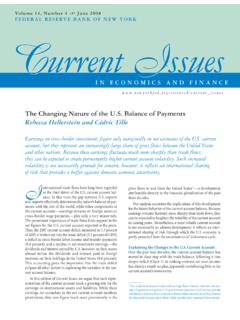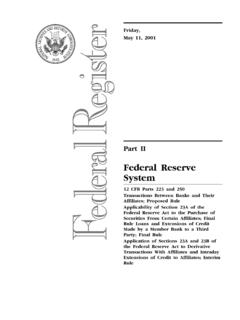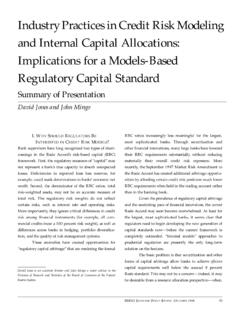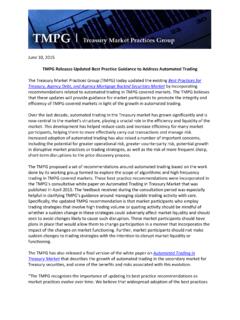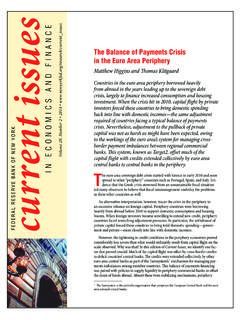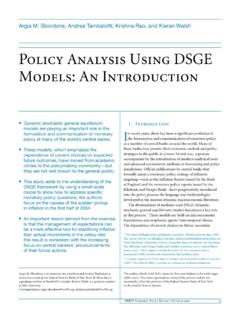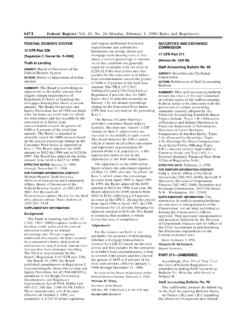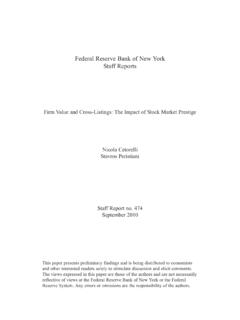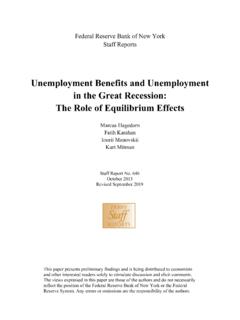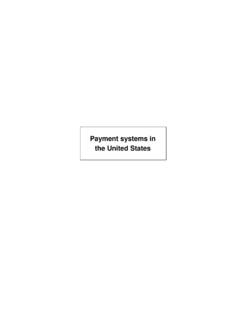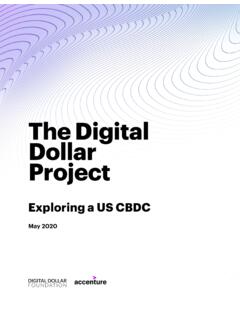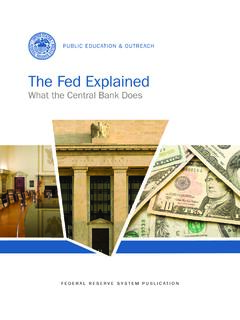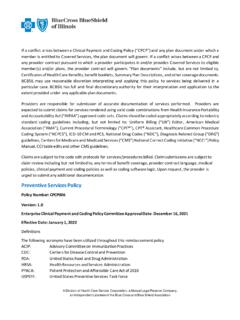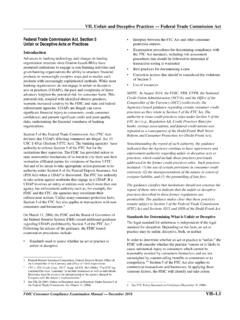Transcription of International Trade, Risk, and the Role of Banks
1 federal reserve bank of New york Staff Reports International Trade, Risk, and the Role of Banks Friederike Niepmann Tim Schmidt-Eisenlohr Staff Report No. 633. September 2013. Revised November 2014. This paper presents preliminary findings and is being distributed to economists and other interested readers solely to stimulate discussion and elicit comments. The views expressed in this paper are those of the authors and do not necessarily reflect the position of the federal reserve bank of New york or the federal reserve system .
2 Any errors or omissions are the responsibility of the authors. International Trade, Risk, and the Role of Banks Friederike Niepmann and Tim Schmidt-Eisenlohr federal reserve bank of New york Staff Reports, no. 633. September 2013; revised November 2014. JEL classification: F21, F23, F34, G21. Abstract Banks play a critical role in International trade by providing trade finance products that reduce the risk of exporting. This paper employs two new data sets to shed light on the magnitude and structure of this business, which, as we show, is highly concentrated in a few large Banks .
3 The two principal trade finance instruments, letters of credit and documentary collections, covered about 10 percent of exports in 2012. They are preferred for larger transactions, which indicates the existence of substantial fixed costs in the provision and use of these instruments. Letters of credit are employed the most for exports to countries with intermediate degrees of contract enforcement. Compared to documentary collections, they are used for riskier destinations. We provide a model of payment contract choice that rationalizes these empirical findings, and we discuss implications for the ongoing provision of trade finance.
4 Key words: trade finance, multinational Banks , risk, letter of credit _____. Niepmann: federal reserve bank of New york (e-mail: Schmidt-Eisenlohr: University of Illinois at Urbana-Champaign (e-mail: This paper was previously distributed under the title Banks in International Trade Finance: Evidence from the The authors are grateful to JaeBin Ahn, Andrew Bernard, Giancarlo Corsetti, Charles Kahn, Morten Olsen, Veronica Rappoport, Philipp Schnabl, Valerie Smeets, and Catherine Thomas for helpful comments, and they also thank workshop participants at the federal reserve bank of New york , New york University and UAB, the 2014 EITI Conference, the Ifo Institute conference on State Export Credit Guarantees in a Globalized World.))
5 And the 2014 conference of the CEPR working group on the Macroeconomics of Global Interdependence. The authors also thank Geoffrey Barnes for excellent research assistance, and the SWIFT Institute for providing some of the data used in this research. The views expressed in this paper are those of the authors and do not necessarily reflect the position of the federal reserve bank of New york or the federal reserve system . 1 Introduction International trade exposes exporters and importers to substantial risks , especially when the trading partner is far away or in a country where contracts are hard to enforce.
6 Firms can mitigate these risks through specialized trade finance products offered by financial intermediaries. In 2012, Banks in the United States provided these services in the form of letters of credit and documentary collections for about 10 percent, or about $153. billion, of goods Since the global financial crisis, trade finance has been under great scrutiny from both the public and the private sectors. Policy makers have become increasingly aware that trade finance is a key tool for internationally active firms and that distress in the financial sector and rising costs of providing trade finance for Banks can have negative effects on In 2009, the G20 committed to extending the public support for trade finance by $250 billion, worried that firms would stop exporting without bank guarantees.
7 In the context of the Basel III framework, Banks raised concerns that the new rules on capital and leverage would make trade finance too costly, bringing down the risk weights on letters of credit originally Regulatory changes have affected the business. Several financial institutions lately reduced their trade finance activities or exited the business altogether. Other Banks have started securitizing trade guarantees given the continuing strong demand for such It remains an open question whether private Banks can satisfy the demand or whether International organizations and government agencies should step up their Despite the large interest in trade finance from policymakers, internationally active companies and financial market participants, knowledge of the business is still very lim- ited.
8 A main obstacle to academic research has been the lack of available data. In this 1. In a letter of credit, the importer's bank guarantees payment to an exporter upon proof that the goods were delivered to the importer. A documentary collection consists of ownership documents that are forwarded by the exporter's bank to the importer's bank ; the importer receives the documentary collection only upon payment. 2. Niepmann and Schmidt-Eisenlohr (2013) find a causal effect of reductions in the supply of letters of credit by Banks on exports using the FFIEC 009 data introduced in this paper.
9 Based on data from Japan and Peru, respectively, Amiti and Weinstein (2011) and Paravisini et al. (forthcoming) also find that Banks shocks affect International trade. 3. Specifically, trade finance is an off-balance sheet item that will receive a higher risk weight under the 2010 International agreement known as Basel III, produced by the Basel Committee on Banking Supervision; and trade finance will also weigh on the Basel III leverage ratio. 4. See Financial Times (2013) on the December 2013 issuance of the first $1 billion security based on trade finance.
10 5. There are ongoing discussions at the WTO whether the private sector is able to meet the demand for trade finance, especially in poor countries. See Working Group on Trade, Debt and Finance (2014). 1. paper, we use two new, complementary data sets to shed light on the trade finance busi- ness of Banks . We show, for the first time, the extent to which exporters employ letters of credit (LCs) and documentary collections (DCs), the two most important trade finance products for mitigating risk in International trade; we document the variation in the extent of their use across destination countries and detail the characteristics of Banks that offer them; and we present a model that explains firms' choices regarding payment arrangements that is consistent with the patterns found in the data.
